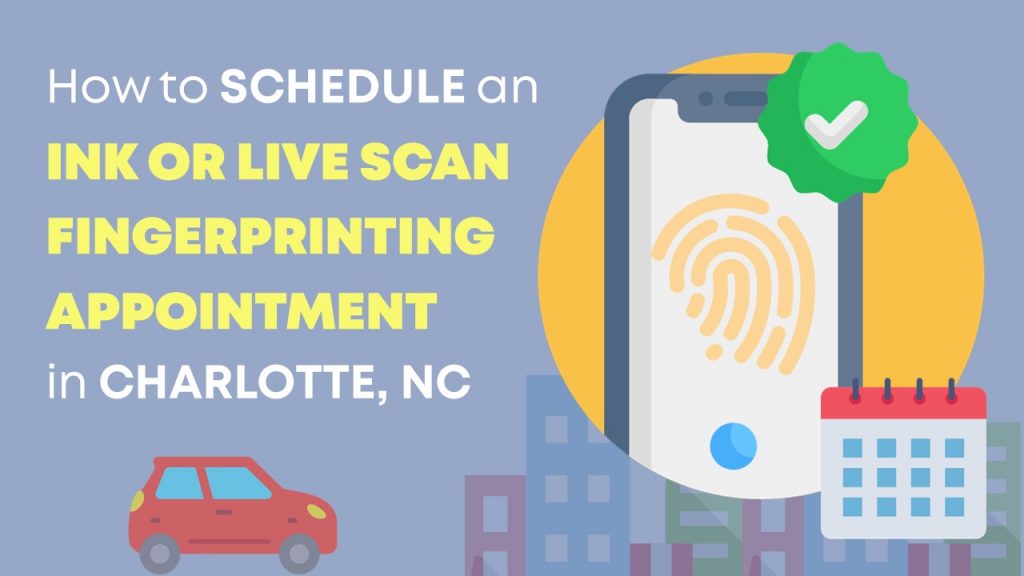Are you an individual, a new employee, a licensed professional, or a business owner who is in the process of...
- Starting a job with access to people’s personal, financial, or sensitive information?
- Getting licensed as a real estate agent or life insurance producer?
- Renewing your license for teaching, nursing, or childcare?
- Applying for a retail or liquor license for your business?
- Applying for a commercial driver's license?
- Applying for a concealed carry gun permit?
- Adopting or fostering a child?
If so, then at some point in the process, you will need to get professionally fingerprinted.
If you’ve never done it (and even if you have), making arrangements to get fingerprinted can be a confusing, stressful, and time-consuming experience.
This article will give you an overview to help make it a smoother process for you, and so you’ll know what to expect at each step.
An Overview of the Fingerprinting Process
Fingerprinting is a means of verifying your identity and helping your employer or another agency confirm that you don’t have a criminal charge that would disqualify you for the position or privilege you’re applying for.
These are the basic steps for getting fingerprinted:
- You are notified that you are required to get fingerprinted.
- Read the instructions carefully to find out where and in what format your fingerprints are required to be collected and sent for review.
- Schedule an appointment with the right fingerprinting service provider.
- At your appointment, provide the required documentation to verify your identity.
- The technician will capture your fingerprints in the required format.
- The fingerprints will be sent to the appropriate agency for review.
- The results will be sent to the appropriate party.
It’s a fairly simple process, but there are some key details that you need to be aware of that will save you time, money, and energy, so let’s take a closer look at the process.
A Closer Look at the Fingerprinting Process
At the very beginning of the process, you’ll be notified, either by your employer, a state or federal agency, or some other authority, that you're required to get fingerprinted.
If you’re applying for a state license, such as to become a real estate agent, the state agency in charge will inform you that you’re required to get fingerprinted..
If you’re starting a new job that requires a background check, your employer will include instructions as part of your onboarding package.
Typically, your instructions will include the following:
Fingerprint Cards
The company hiring you may provide a set of fingerprint cards. Usually, it will be the standard FD-258 cards, although some agencies may require a different card. You’ll provide these cards to the fingerprinting technician, and they’ll use them to collect your prints.

These cards will often come pre-filled with the company’s information, as well as your personal information. If not, your instructions will usually include detailed information to help you fill the card out manually.
ORI Number
ORI stands for Originating Agency Identifier Number. It's a special code that identifies the agency requiring you to get fingerprinted, why you’re getting fingerprinted, and where to send the results. There is a space for the ORI Number on the fingerprint card.
If there’s a specific department that needs access to the results, you may also be provided with the Originating Agency Case Number (OCA) that identifies it. There’s a space for that on the fingerprint card as well.
Where and in What Format to Send the Fingerprints
The requesting agency may require your fingerprints to be sent in a certain format, such as ink or Live Scan. If they don’t specify, the ink will usually be sufficient.
Knowing the required format will help you determine the best way to go about getting fingerprinted. We’ll talk about that more in a moment.
If the required format is ink, your instructions will tell you where to mail the completed fingerprint card.
If it’s Live Scan, the instructions will include the agency to which your fingerprints must be electronically transmitted.
The required format is another detail that can help you decide how to best go about getting fingerprinted.
The Documents You’ll Need To Verify Your Identity
Before collecting your fingerprints, the technician will need to verify your identity, so you’ll want to bring an acceptable form of identification.
The preferred form of identification will be state-issued with a picture on it, such as a driver's license or a state ID card.
If you don’t have that, you can use a passport, birth certificate, or Social Security card, as long as you also provide supporting documentation, such as a utility bill or a vehicle registration card.
How Your Fingerprints Get Collected
There are a few common methods for collecting your fingerprints. Which method you’ll choose will depend on the instructions you were given, how convenient you want the process to be, and how quickly – and in what format – the results need to be sent and returned.
Here is a brief description, along with some of the pros and cons of each method.
Ink Fingerprinting
The simplest and most common way of collecting your fingerprints is by ink.
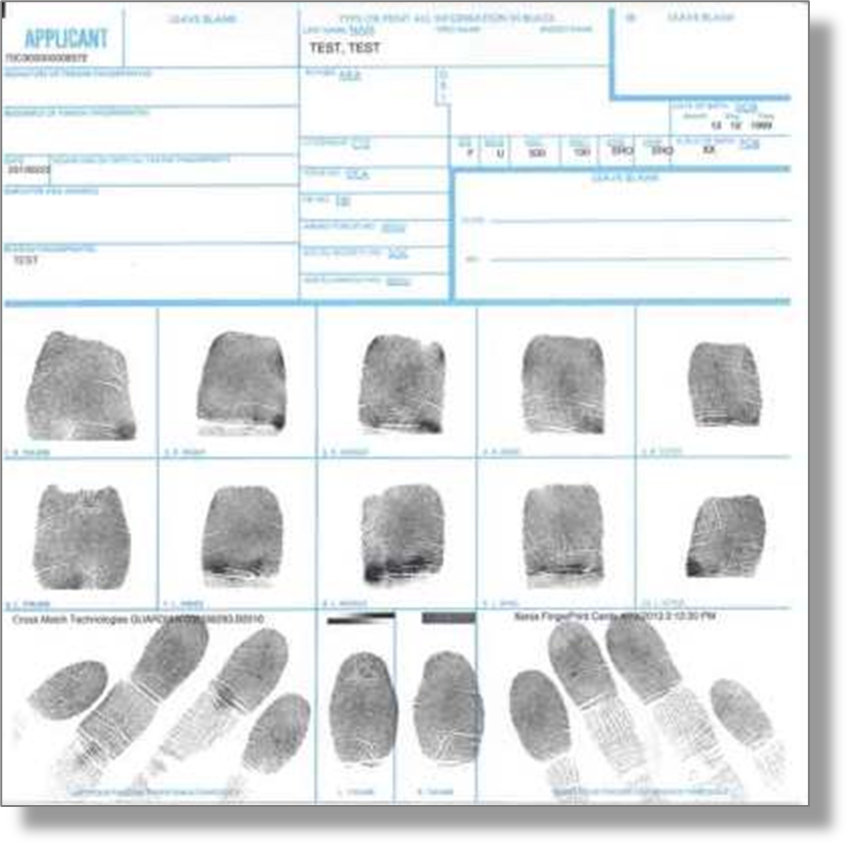
At the appointment, the fingerprinting technician will apply ink to your fingers and then roll them onto an FD-258 fingerprint card (or another card) to collect your fingerprints.
This card has spaces to capture the prints for each finger and thumb – on both hands – as well as spaces for four fingers together and both thumbs individually.
The best thing about the ink method is that it’s the simplest and the least expensive way to go. The downside is that the process can be a bit messy, and the prints have a higher chance of being rejected.
Rejections are rare, but they do happen. Often it will be because you pressed down too hard on the card and the prints came out smudged. To avoid this, it’s best to keep your arms, hands and fingers loose and allow the technician to guide their movement while rolling.
Another reason could be that your prints have characteristics that make them less clearly defined and difficult to capture. Qualified technicians usually have a few “tricks of the trade'' to compensate for such challenges.
One such trick is to collect your prints on multiple cards. That way, there will be at least one clear, usable print in the collection for each finger.
Ink fingerprinting takes about 5 to 10 minutes to complete, depending on the number of cards.
Once your fingerprints have been captured, the technician will certify them by signing and dating the card. You’ll then finish filling out the information at the top of the card, and once it’s complete, you’ll mail it to the necessary address.
The results will usually be mailed to you in about 4 to 6 weeks.
Live Scan Fingerprinting
Live Scan is an electronic fingerprinting technology that makes the process of collecting and sending your fingerprints faster and easier than the ink method.
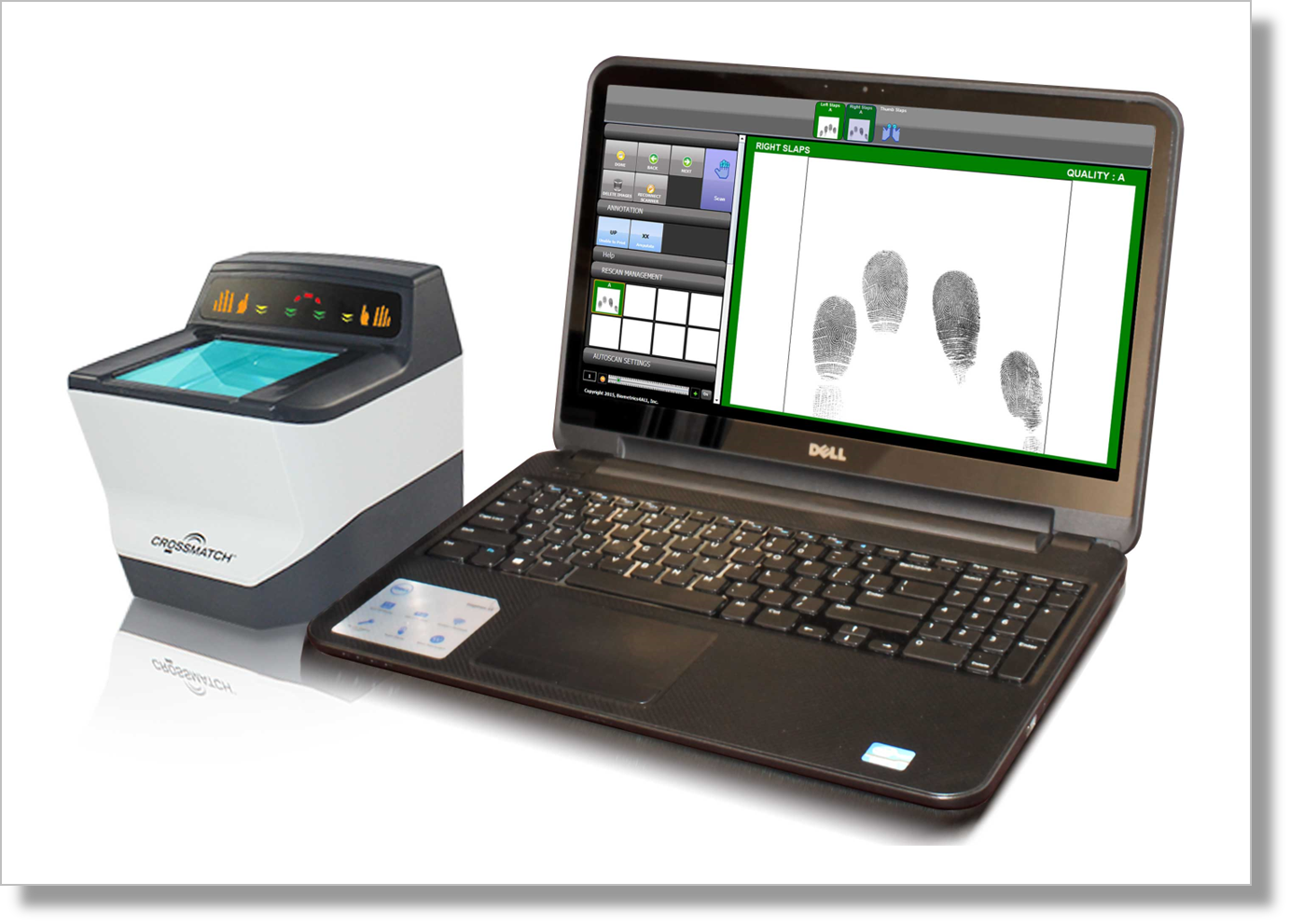
Live Scan costs a bit more than ink fingerprinting because of equipment expenses and because the receiving agency usually charges a fee when the prints are transmitted electronically.
Here’s what the Live Scan process typically looks like:
First, your technician will ask you for contact information and information about your physical description, such as your height, weight, and hair color. They’ll enter that information into a computer.
If the prints are to be transmitted to your local State Bureau of Investigations (SBI), you may be required to present an Electronic Submission form to the technician from the requesting agency in order to get fingerprinted.
Once they verify your identity, the technician will then roll your fingers onto the screen of a special scanner connected to a computer that uses special software, and your fingerprints will be captured electronically and saved as a data file.
Because it’s electronic, the process is faster and cleaner, and the images are clearer and rarely, if ever, rejected. In fact, the scanning software automatically detects unusable prints and prompts the technician to redo them. Again, if there are any challenges in capturing your prints, a qualified technician will have ways to compensate.
Once collected, Your fingerprints can be delivered to the receiving agency in two ways:
- Print-to-Card: They can be printed onto an FD-258 card and then mailed. Some providers may even offer the option to electronically archive your data file so you can have additional copies printed later.
- Electronic Transmission: Using special software, the data file containing the prints can be electronically transmitted either to a federal agency like the FBI or FINRA or to a local state agency. The Florida Department of Law Enforcement (FDLE) even receives transmissions from outside the state.
The whole Live Scan fingerprinting process usually takes about 5 minutes or less.
Once your fingerprints have been reviewed, your results will be sent back within about 48 hours. The agency will either email the results to you or they’ll send you a link to log into a web portal where you can retrieve the results.
Three Options for Getting Fingerprinted
Basically, you have three options for getting fingerprinted:
- Visiting your local Sheriff's Office
- Using a fingerprinting service provider
- Hiring a mobile fingerprinting service
Here’s a closer look at each of these options:
Visiting Your Local Sherriff's Office
Your local county Sheriff's Office or police station most likely provides ink and Live Scan fingerprinting services to their residents.
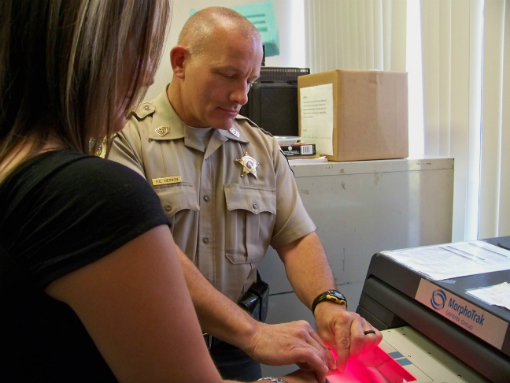
The best thing about going to the Sheriff's Office is that it’s usually the most cost-effective option. You can get up to 5 cards for around $10, plus a small convenience fee if you pay online.
The downside is that going to the Sheriff’s Office is the absolute least convenient and most time-consuming way to get fingerprinted, especially after the COVID-19 pandemic started.
In many counties, you are required to schedule an appointment or complete an online application and pay beforehand – sometimes days or even weeks in advance.
For the counties that allow walk-ins, the lines are often very long, so the wait time can be several hours. On top of that, fingerprinting may only be available during certain hours.
In some states, their State Bureau of Investigations (SBI) will only accept Live Scan transmissions from the Sheriff’s department, so if you’re getting fingerprinted for a state license in one of those states, the Sheriff's Office may be the only option available to you.
Using a Fingerprint Service Provider
There are many private companies that offer fingerprinting services. You can do a search for “Live Scan fingerprinting near me” and find one in your local area.

The actual fingerprinting experience is similar to going to the Sheriff’s Office, but it’s generally more convenient because you can often get walk-in service, and there’s usually no crowd or long wait time.
The downside is that it costs a bit more than going to the Sheriff's Office. Again this is due to equipment costs and the transmission fee charged by the receiving agency.
Hiring a Mobile Fingerprinting Service

This is by far your most convenient option for getting fingerprinted – both for ink and Live Scan. Your experience will be similar to if you were to visit a private company. The difference is you can schedule to have a fingerprinting technician provide service at a time and place convenient for you.
Mobile fingerprinting services are easy to use. You can find one in your area by doing a search for “mobile fingerprinting” or “fingerprinting near me”. Check the company’s Google or Yelp reviews to make sure the company is reputable.
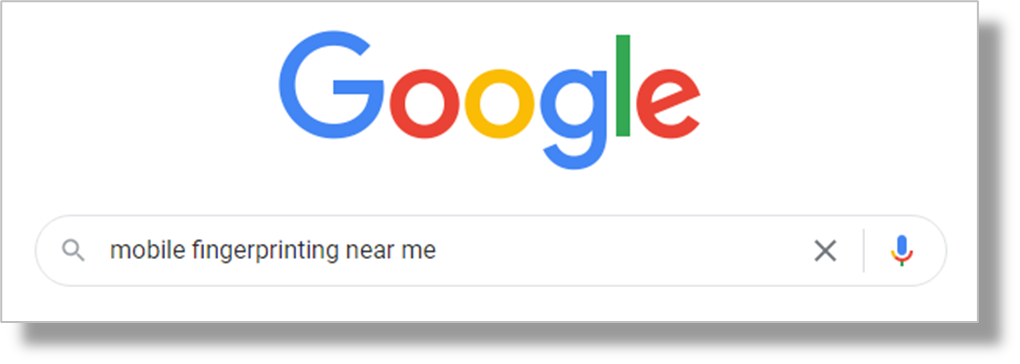
Most professional companies will have a way for you to schedule an appointment right from their website, as well as a telephone number to schedule an appointment by phone.
Beware of companies that don’t have a dedicated customer service representative or that don’t answer the phone the first time you call. That’s usually a clue that they won’t provide very good service.
Once you contact the company, the representative will find out what your needs are, help you schedule an appointment, and then send a fingerprinting technician to you at the agreed-upon time and place. They can even provide you with FD-258 cards if you need them.
You can have them meet you wherever and whenever it’s convenient – at home, work, a public place, or even the hospital. Many companies will even send a technician after business hours, on weekends, or at the last minute.
Mobile fingerprinting services are also a great option for companies with a number of employees that require fingerprinting. An appointment can be scheduled to service all of your employees at the same time and place – usually at a group rate.
Considering the tremendous convenience, mobile fingerprinting services are very affordable. For ink, you’ll usually pay a reasonable fee for the first card and a discounted fee for additional cards.
For Live Scan, you can expect to pay a reasonable travel fee plus a fee for each printed card or a transmission fee for electronic submissions.
Some companies will even provide add-on services, such as mobile notary or mobile drug testing services.
A mobile fingerprinting service is an awesome alternative that can make getting your fingerprints taken convenient and stress-free. If you’d like us to help you schedule a fingerprinting appointment, go here.
The Bottom Line
Getting fingerprinting is an essential step for many important personal, family, employment, business, and life endeavors.
The process of getting fingerprinted can be confusing, stressful, and time-consuming – but it doesn’t have to be.
The simple steps in this article will help you quickly and easily determine the fastest, the most convenient, and the most cost-effective way to get it done.
Which options do you think will work best for you?
Let Us Help Make The Process Even Easier
Do you need ink or Live Scan fingerprinting? Schedule a professional, reliable, and friendly mobile notary to assist at a time and place convenient for you.
Schedule your appointment now...
Fill out the form below, and one of our friendly associates will call you back to give you a quote and help you finalize your appointment.
For immediate assistance, call 704-800-6582.

